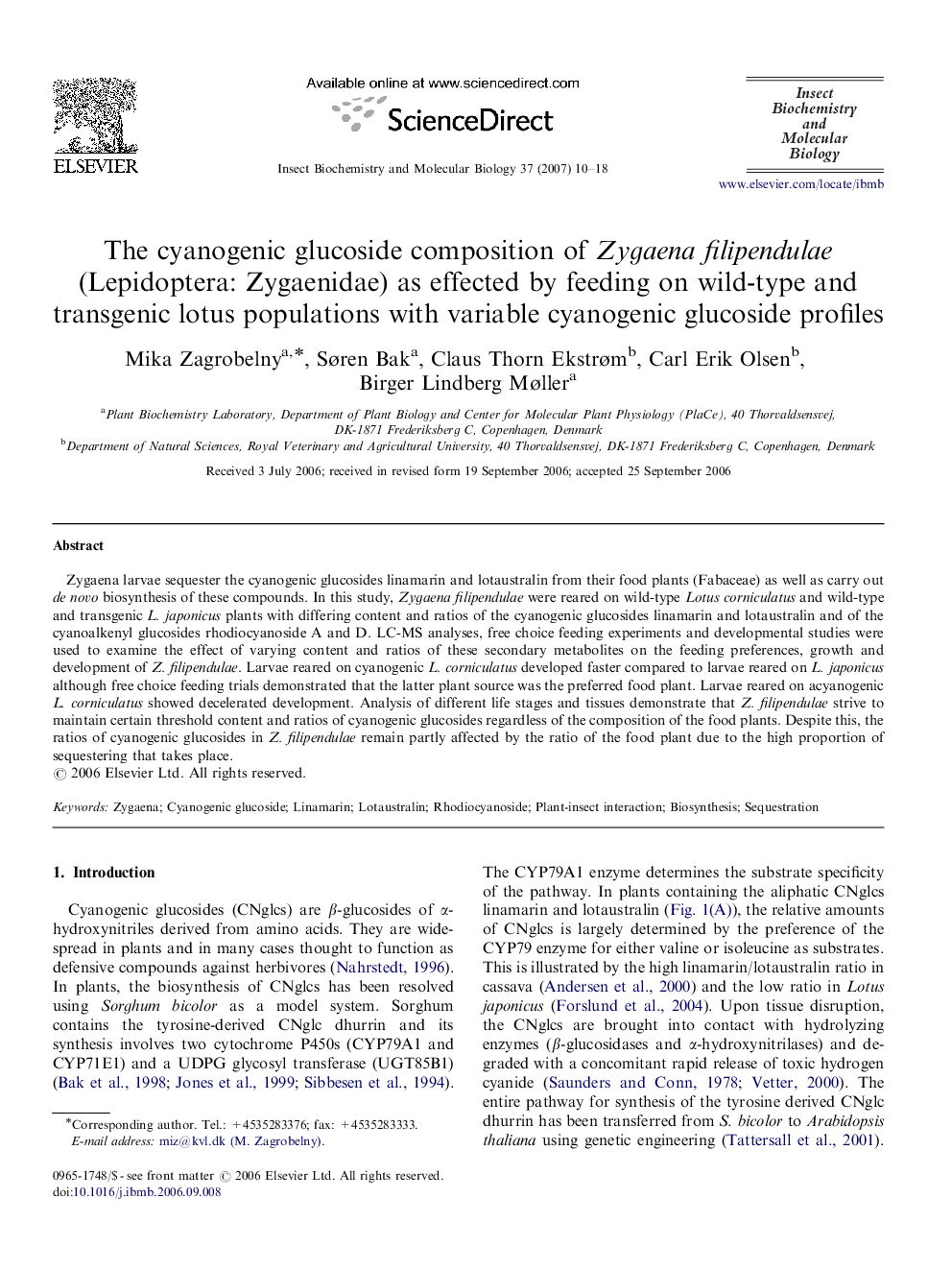| Article ID | Journal | Published Year | Pages | File Type |
|---|---|---|---|---|
| 1982896 | Insect Biochemistry and Molecular Biology | 2007 | 9 Pages |
Zygaena larvae sequester the cyanogenic glucosides linamarin and lotaustralin from their food plants (Fabaceae) as well as carry out de novo biosynthesis of these compounds. In this study, Zygaena filipendulae were reared on wild-type Lotus corniculatus and wild-type and transgenic L. japonicus plants with differing content and ratios of the cyanogenic glucosides linamarin and lotaustralin and of the cyanoalkenyl glucosides rhodiocyanoside A and D. LC-MS analyses, free choice feeding experiments and developmental studies were used to examine the effect of varying content and ratios of these secondary metabolites on the feeding preferences, growth and development of Z. filipendulae. Larvae reared on cyanogenic L. corniculatus developed faster compared to larvae reared on L. japonicus although free choice feeding trials demonstrated that the latter plant source was the preferred food plant. Larvae reared on acyanogenic L. corniculatus showed decelerated development. Analysis of different life stages and tissues demonstrate that Z. filipendulae strive to maintain certain threshold content and ratios of cyanogenic glucosides regardless of the composition of the food plants. Despite this, the ratios of cyanogenic glucosides in Z. filipendulae remain partly affected by the ratio of the food plant due to the high proportion of sequestering that takes place.
